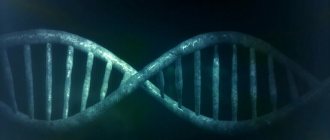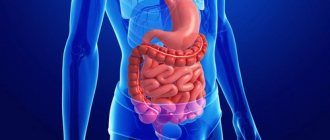What is celiac disease?
Celiac disease (celiac disease) is a disease that is often caused by an allergy to gluten, a protein found in wheat, barley or rye. Scientists believe that celiac disease affects approximately less than 1 percent of all adults (most statistics point to a diagnosis rate of 0.7 to 1 percent). For people with celiac disease, a strict gluten-free diet is the only definitive way to improve symptoms and prevent future health problems.
The incidence of celiac disease and gluten intolerance has increased significantly over the past few decades, although it remains unclear to scientists why this is happening. According to some reports, rates of celiac disease have increased by almost 400 percent since the 1960s.
Rates of celiac disease are still very low compared to other common chronic health problems such as cancer, diabetes, obesity or cardiovascular disease. However, experts in the field of food allergies and gluten intolerance believe that many other people may actually have celiac disease without realizing it. For example, researchers at the University of Chicago estimate that only about 15 to 17% of cases of celiac disease are actually known, leaving about 85% of people with celiac disease unaware of the problem ().
Many symptoms of celiac disease boil down to dysfunction of the gastrointestinal tract. Celiac disease is a type of autoimmune disease characterized by an inflammatory response to gluten that damages tissue in the small intestine. The small intestine is a tube-like organ between the stomach and large intestine where a high percentage of nutrients are normally absorbed, but this process is disrupted in people with celiac disease.
The most common symptoms of celiac disease
According to the Celiac Disease Foundation, this disease can be difficult to diagnose because it affects people at all different levels in different ways. In fact, it is believed that people with a gluten allergy may experience more than 200 symptoms of celiac disease, which are related to the disease's effects on the immune and digestive systems ().
Here are the most common symptoms of celiac disease ():
- bloating
- cramps and abdominal pain
- diarrhea or constipation
- problems concentrating
- changes in body weight
- sleep disorders, including insomnia
- chronic fatigue or lethargy
- nutrient deficiencies due to problems with absorption in the digestive tract
- chronic headaches
- joint or bone pain
- mood changes, such as anxiety
- tingling numbness in the arms and legs
- seizures
- irregular periods, infertility, or recurrent miscarriage
- stomatitis and mouth ulcers
- thinning hair and dull skin
Gluten is sometimes called the "silent killer" because it can cause chronic damage throughout the body without the patient even realizing it. Symptoms of celiac disease can vary in intensity and depend on a person's unique response, so not every person will experience the same reactions or signs.
Some people have few to no symptoms. For others, their symptoms may begin as persistent headaches, unexplained weight changes, or feelings of anxiety. This can continue to progress and develop into insomnia, feeling tired, joint pain, and even cause symptoms of depression and eventually mental decline or dementia in older adults.
Celiac disease can be difficult to recognize because the symptoms are usually very similar to those caused by other digestive tract diseases and autoimmune conditions, such as:
- irritable bowel syndrome (IBS);
- Iron-deficiency anemia;
- food allergies such as lactose intolerance, FODMAP sensitivity;
- digestive disorders such as inflammatory bowel disease (IBD) and diverticulitis ().
Clinical picture
Celiac disease is characterized by impaired intestinal absorption, sub- or atrophy of the mucous membrane of the small intestine, and a positive reaction to a gluten-free diet (exclusion from food of cereal products containing gluten). Among the clinical options, true celiac disease and celiac disease syndrome should be distinguished, which can develop with a wide variety of intestinal diseases (developmental anomalies, infections, prolonged use of antibiotics, and others). The onset of celiac disease often coincides with the introduction of complementary foods containing flour products into the child’s diet. Therefore, children aged 6–12 months get sick more often; This period is especially dangerous in terms of provoking celiac disease.
Rapid, foamy stools appear: copious, with a pungent odor, light or with a grayish tint, greasy; As a rule, pathogenic intestinal microflora is not detected in feces. Treatment of dyspepsia with conventional means (antibiotics, enzyme preparations, dietary restrictions, etc.) does not produce any effect. The child becomes lethargic, pale, loses body weight, and appetite decreases. Dystrophy gradually develops, and children acquire a typical appearance for celiac disease: severe exhaustion, dull eyes, bright mucous membranes, and a huge belly.
In some cases, edema develops in the lower extremities; Spontaneous bone fractures are common. Pseudoascites (fluid accumulation in the atonic intestine) is determined. Then there are symptoms of multivitamin deficiency (dry skin, stomatitis, dystrophy of teeth, nails, hair, and others).
As a rule, with celiac disease (especially if it lasts for a long time), there is impaired absorption of disaccharides, fats, vitamins, iron, calcium; Cystine transport and tryptophan metabolism are disrupted; that is, we are talking about universal malabsorption (from the Latin “ malus”
bad, and "absorbtio" absorption). In this regard, the polymorphism of the clinical picture is understandable. Children suffer not only physically, but also mentally (lability of mood, isolation, increased excitability, negativism). An important sign of the disease, if it lasts for a long time, is short stature.
The course of celiac disease is wavy; a secondary infection often occurs; in some cases death.
Less common but more severe symptoms of celiac disease
While the above list represents the more common symptoms of celiac disease, there is also evidence to suggest that the damage caused by this disease extends far beyond the gastrointestinal tract and does not manifest itself in the way we previously thought. Research into food allergies, including gluten intolerance, over the past few decades has shown that gluten can affect virtually every system in the body (). And whether any of the classic symptoms are present or not, all people with celiac disease are still at risk of long-term complications.
While not all people with celiac disease will experience such extreme symptoms or problems, it is possible that underlying inflammatory responses to gluten will cause health problems in the gut microbiome, brain, endocrine system, stomach, liver, blood vessels, smooth muscle and even cell nuclei . This is why people with celiac disease are at greater risk of developing numerous diseases, such as:
- Diabetes mellitus type 1;
- Osteoporosis;
- Cardiovascular diseases;
- Multiple sclerosis;
- Skin diseases (such as dermatitis or eczema);
- Autoimmune thyroid diseases;
- Anxiety or depression;
- Attention deficit hyperactivity disorder (ADHD);
- Arthritis;
- Other food allergies;
- Asthma.
Causes of celiac disease
Gluten allergy or non-celiac gluten sensitivity increases the production of inflammatory cytokines. They are sent by the immune system to attack perceived threats throughout the body. It occurs in some people due to a combination of both environmental and genetic factors. People with celiac disease are usually genetically predisposed to having a gluten allergy (including abnormalities in human leukocyte antigens [HLA] and non-HLA genes), although having celiac disease in one relative in the family does not mean that any of their descendants will necessarily will suffer from this disease ().
One of the hallmarks of celiac disease is an increased level of antibodies formed upon contact with gliadin, a glycoprotein that is one of the gluten compounds. The effects of gliadin may turn on specific genes in human immune cells that cause the release of cytokine chemicals. Cytokines are generally beneficial when they do their intended job—helping repair and protect the body from bacteria, viruses, infections, and injury. However, we know that cytokines are also key players in causing chronic inflammation, which causes most diseases.
High levels of inflammation are generally associated with poor health and higher rates of disease. Chronic, high inflammation increases the risk of a variety of health problems, including mental disorders, autoimmune diseases and even cancer. Research also shows that people with other autoimmune diseases and diabetes are more at risk of developing celiac disease because they share the same genetic factors and immune responses.
Why and how exactly does gluten cause such problems? It all comes down to the chemical composition of this protein and how it affects the digestive organs. Gluten is found in some grains and is considered an “antinutrient.” Antinutrients can be both good and bad, for example, some are called "phytonutrients" and are found in many vegetables and fruits. Antinutrients are present in plants, which are able to protect themselves from threats by producing “toxins” that can repel insects, beetles, rodents and fungus.
Gluten is a type of natural antinutrient that acts as a toxin when people eat it because it can damage the intestinal lining, bind essential minerals making them unavailable to the body, and interfere with digestion and absorption of essential nutrients, including protein.
How does celiac disease affect the gastrointestinal tract?
When celiac disease symptoms worsen, it is the result of exposure to gluten, which causes inflammatory responses that are associated with dysfunction primarily in the digestive, endocrine, and central nervous systems. Much of the problem starts in the gut, where much of the immune system actually resides.
Exposure to the protein gliadin increases intestinal permeability, which means small tears in the intestinal lining can open wider and allow substances to enter the bloodstream. The immune system responds to damage to the villi, which are tiny projections that line the small intestine. Typically, in a healthy person, the intestinal wall does an excellent job of preventing microparticles from entering the bloodstream, but irritations caused by food sensitivities lead to the destruction of this system.
This process is known as leaky gut syndrome, and when you develop this condition, you may become very susceptible to other food allergies or sensitivities that you didn't have before. This is because the immune system is overworked to keep the situation under control.
Gluten also has certain “sticky” qualities that can interfere with the proper absorption and digestion of important nutrients when people are gluten intolerant, resulting in poorly absorbed food in the digestive tract, nutrient deficiencies, and further inflammation ().
When the immune system recognizes that foods are not being broken down properly within the intestines, symptoms of leaky gut syndrome may worsen as the body continues to attack the lining of the small intestine, causing reactions such as abdominal pain, nausea, diarrhea, constipation and intestinal disorders .
Leaky gut syndrome allows lipopolysaccharides (the main components of the cell wall of gram-negative bacteria) found in our intestines to penetrate the intestinal lining through small holes in the intestinal wall and increase systemic inflammation.
How does celiac disease affect the central nervous system?
Many people think that celiac disease is caused by food allergies and only affects the digestive system, but in fact the brain is one of the most susceptible organs to inflammation.
Gluten increases inflammation and gut permeability, but can also contribute to the breakdown of the blood-brain barrier, meaning certain substances can enter the brain that wouldn't normally get there. It is for this reason that symptoms of celiac disease can include problems concentrating, depression, anxiety, insomnia and fatigue.
And the brain is not the only other organ that is vulnerable to the effects of untreated food allergies. Many people may not experience the obvious gastrointestinal symptoms of celiac disease or gluten sensitivity, but may still find that the immune system is silently attacking the body elsewhere, such as the muscles or joints.
Antibodies that are designed to target gliadin appear to cross-react with certain brain proteins, meaning they bind to the neuronal synapse and contribute to complications in the brain. In some severe cases where this occurs, dysfunction may manifest as seizures, learning difficulties, and neurobehavioral changes.
How is celiac disease different from gluten sensitivity?
Some researchers even suggest that a high percentage of the population may have some form of gluten sensitivity, whether they actually suffer from celiac disease or not. In fact, it has been suggested that almost everyone has some level of negative reaction to gluten, with some people (especially those with confirmed celiac disease) having reactions that are much more severe than others.
We now know that a person can be “gluten intolerant” without having celiac disease. This is a condition known as non-celiac gluten sensitivity (NCGS) (). Even people without a gluten allergy can experience similar common problems when eating gluten-containing foods, which tend to decrease significantly when a person avoids gluten. While celiac disease diagnosis rates remain relatively low, more and more people are also identifying as gluten sensitive or intolerant.
Why is this happening? One reason could be overexposure to gluten, since this protein is everywhere today! Gluten is included in many processed foods and is hidden in everything from cookies and cereals to ice cream, condiments and even cosmetics. Another reason why people choose to stay away from gluten is that people's awareness of its negative effects is steadily increasing. The "gluten-free movement" is gaining popularity - even major food manufacturers now offer gluten-free flours, breads, grains, etc. They even make gluten-free alcohol these days!
There is also a wheat allergy, which is different from a gluten allergy. People with a wheat allergy can also follow a gluten-free diet, but they do not have to strictly limit their consumption of rye, barley and oats, as do those with celiac disease.
Causes
To date, it is not completely known what exactly provokes the development of celiac disease in children. Researchers follow several directions in determining the root cause.
- Immunological nature. Children with celiac disease are thought to have antibodies to gluten in their bodies. When this substance penetrates the intestines, lymphocytes begin to attack foreign objects, causing damage to its walls and mucous membrane.
- Enzymatic theory. It is based on the fact that in the body of such babies there is no special enzyme in the small intestine that can break down gluten.
- Viral. It is believed that in patients with celiac disease, antibodies to the adenovirus are found in the blood.
- Pathoreceptor theory. It is based on the fact that such babies have disturbances in the structure of the walls of the intestinal mucosa, in particular pathology of the protein composition.
Most scientists are inclined to the immunological theory.
At-risk groups
Children with Down syndrome are more likely to develop celiac disease.
There are a number of children who have a significantly higher risk of developing celiac disease than others. These include babies with:
- Down syndrome;
- autoimmune thyroiditis;
- Shereshevsky syndrome;
- family history of celiac disease;
- Williams syndrome;
- selective deficiency of immunoglobulin A;
- diabetes of the first type.
Diagnosis of celiac disease
Routine testing for celiac disease is not recommended unless you have symptoms or are at increased risk of developing them.
Testing for celiac disease includes:
- blood tests - help to identify a person with celiac disease;
- biopsy – performed to confirm the diagnosis.
These procedures are described in more detail below.
When tested for celiac disease, you will need to eat foods that contain gluten to ensure that the tests are accurate. You should also not start a gluten-free diet until the diagnosis has been confirmed by a specialist, even if the blood test results are positive.
Blood analysis
Your GP will take a blood sample and test it for antibodies commonly found in the blood of people with celiac disease. Before the test, you need to include gluten in your diet - this will help avoid inaccurate results. If certain antibodies are present in your blood, your GP will refer you for a small intestinal biopsy.
However, it is sometimes possible to have celiac disease and not have these antibodies in your blood. If you continue to have symptoms associated with celiac disease despite a negative blood test, your doctor may still recommend a biopsy.
Biopsy
The biopsy is performed in a hospital, usually by a gastroenterologist (a specialist in the treatment of diseases of the stomach and intestines). A biopsy can help confirm the diagnosis of celiac disease. If you need a biopsy, an endoscope (a thin, flexible tube with a light and a camera on one end) will be inserted into your mouth and gently inserted into your small intestine.
Before the procedure, you will be given a local anesthetic to numb your throat or a sedative to help you relax. The gastroenterologist will insert a tiny biopsy instrument using an endoscope to take samples of the lining of the small intestine. The sample is then examined under a microscope for signs of celiac disease.
Tests after diagnosis
If you have been diagnosed with celiac disease, you may also be referred for other tests to evaluate how the disease has affected you.
You may have additional blood tests to check the levels of iron and other vitamins and minerals in your blood. This will help determine whether celiac disease has led to the development of anemia (lack of iron in the blood) as a result of poor digestion.
If you develop dermatitis herpetiformis (an itchy rash caused by gluten intolerance), you may have a skin biopsy to confirm the condition. A skin biopsy will be performed under local anesthesia and involves a small sample of skin taken from the affected area so that it can be examined under a microscope.
A DEXA scan may also be recommended in some cases of celiac disease. This type of X-ray test measures bone density. This may be necessary if your GP thinks your condition may have started to wear away your bones.
In celiac disease, lack of nutrients caused by poor absorption of nutrients can make bones weak and brittle (osteoporosis). A DEXA scan is not used to detect or evaluate arthritis, and only measures bone density to determine whether you are susceptible to bone fractures as you get older.
NICE Guide
2015 guidance published by the National Institute for Health and Care Excellence (NICE) provides detailed information on when to test for celiac disease.
Adults or children should be tested if they have the following signs or symptoms:
- persistent unexplained gastrointestinal symptoms (described above);
- growth retardation;
- prolonged fatigue (feeling tired all the time);
- unexpected weight loss;
- severe or persistent mouth ulcers;
- unexplained iron deficiency anemia, vitamin B12 deficiency or folate deficiency anemia;
- type 1 diabetes mellitus was detected;
- Autoimmune thyroid disease (underactive thyroid or overactive thyroid) is detected;
- irritable bowel syndrome (IBS) - in adults.
Testing is also recommended if you have a first-degree relative (parent, sibling, or child) with celiac disease. ()
Prevention
Prevention of exacerbations of ciliacia is the exclusion of foods containing gluten from the diet, proper diet, and avoidance of stressful situations.
For relatives of the patient and people at risk (with diabetes, autoimmune thyroiditis, lymphocytic colitis, irritable bowel syndrome), it is advisable to conduct genetic analysis for early detection of the disease and prevent complications. When planning pregnancy, patients with celiac disease are recommended to consult a genetic specialist.
Celiac disease treatment
There is currently no known cure for celiac disease, which is a chronic and autoimmune disease in nature, so there are only treatments to help minimize symptoms and help restore the immune system. Here's what you can do to treat celiac disease.
Follow a strict gluten-free diet
First of all, it is important to follow a completely gluten-free diet, avoiding all foods containing wheat, barley or rye. Gluten makes up about 80% of the protein found in these three grains, although it also lurks in many other foods and contaminated grains.
Keep in mind that since processed foods now dominate people's diets, most people are coming into contact with gluten more often than ever before. Modern food technology even often results in gluten appearing in trace amounts in foods containing other “gluten-free grains” such as corn or oats.
It is important to read food labels very carefully and avoid foods with additives that contain even small traces of gluten, such as almost all flour products, soy sauce, salad dressings or marinades, malt, syrups, dextrin, starch and many other "nasty" ones. Ingredients.
Following a gluten-free diet can be challenging. Luckily, many companies now produce gluten-free products that can be purchased at a variety of grocery stores and specialty food stores. These products will be labeled as “Gluten Free.”
If you have celiac disease, it's important to know which foods are safe. Here are food guidelines to help you determine what to eat and what to avoid.
Avoid the following foods and ingredients:
- wheat
- spelled
- rye
- barley
- triticale
- bulgur
- durum wheat (durum)
- farina
- graham flour
- semolina
Avoid unless label says Gluten Free:
- beer
- bread
- cakes and pastries
- candies
- cereals
- cookie
- gravy
- meats or seafood (not prepared by you)
- oats
- pasta
- factory-made sausages (sausages, frankfurters, etc.)
- salad dressings
- sauces (including soy sauce)
- instant soups
Feel free to eat these gluten-free grains and starches:
- buckwheat
- corn
- millet
- amaranth
- arrowroot
- corn flour
- flour from rice, soy, potato or beans
- corn tortillas
- quinoa
- rice
- tapioca
Healthy gluten-free foods include:
- fresh meat, fish and poultry that have not been breaded, battered or marinated
- fruits
- most dairy products
- starchy vegetables such as peas, potatoes including sweet potatoes and corn
- rice, beans and lentils
- vegetables
- wine, distilled spirits, ciders and spirits
Your symptoms should improve within a few days to weeks of making these dietary adjustments. In children, the intestine usually heals in three to six months. Restoring the lining of the intestines in adults can take several years. Once the intestines are completely healed, the body will be able to properly absorb nutrients. ()
Avoiding gluten helps restore atrophied villi in the small intestine and helps prevent future complications caused by chronic inflammation.
Read in detail about which foods contain gluten and which do not, read here - Gluten-free diet: list of allowed and prohibited foods.
Address any nutritional deficiencies
Many people with celiac disease also need to take supplements to help restore their nutrient supply and relieve symptoms caused by malabsorption ().
Due to celiac disease, you may be deficient in iron, calcium and vitamin D, zinc, vitamin B6, vitamin B12 and folic acid. This is a common consequence of celiac disease and involves the inability of the digestive tract to properly absorb nutrients. Deficiencies are caused by damage and inflammation in the gut, which means that even if you eat select healthy foods, you may develop nutritional deficiencies ().
You can talk to your doctor about running tests to confirm the deficiency, and then you can take quality natural supplements to speed up the healing process and fill in any gaps.
Your doctor may prescribe high-dose dietary supplements or recommend that you take a multivitamin. Most gluten-free foods are not fortified with additional nutrients, so supplements are another way to meet your needs. Of course, increasing your intake of nutrient-dense foods is the best way to get more vitamins and minerals naturally.
Tags: Celiac disease
- Related Posts
- Can turmeric help rheumatoid arthritis?
« Previous entry











